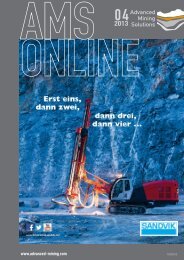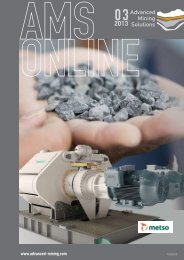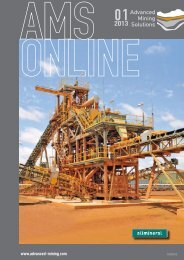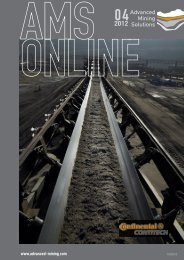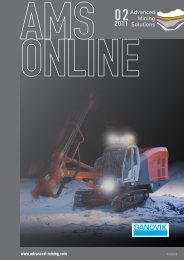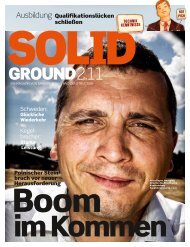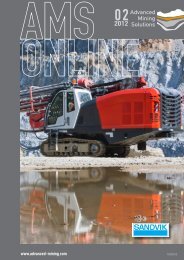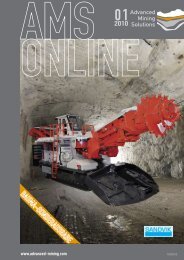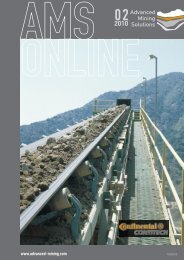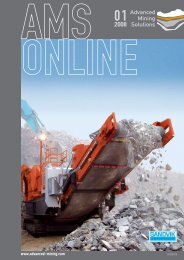A new face drilling rig for narrow tunnels and ... - Advanced Mining
A new face drilling rig for narrow tunnels and ... - Advanced Mining
A new face drilling rig for narrow tunnels and ... - Advanced Mining
You also want an ePaper? Increase the reach of your titles
YUMPU automatically turns print PDFs into web optimized ePapers that Google loves.
Pic. 2:<br />
Schematic tribological system<br />
with variables<br />
Examples in the literature show the importance of<br />
accurate knowledge on the tribological system. In the<br />
area of abrasion wear, the upper shelf-lower shelf<br />
characteristics of material is known. Already small<br />
increases in the hardness of the abrasive material can<br />
massively increase loss of material, Picture 3. The change<br />
in the wear mechanism, in relation to the strain angle α in<br />
erosive wear shows that small changes already have big<br />
effects on wear behaviour of material, Picture 3. Different<br />
materials show their maximum in various strain angles.<br />
While highly hard materials undergo a massive material<br />
loss in wear by impingement (90° impact angle), softer<br />
material like Polyurethan (PUR) often show a minimum.<br />
The reason is the change in the damage mechanism,<br />
since in wear by impingement, ductile materials elastically<br />
absorb the impact energy, so that an elastic blow to the<br />
individual grains occurs. Highly hard material that is less<br />
ductile has a different reaction, so that the kinetic energy<br />
of the abrasive goods is converted in the material <strong>and</strong> thus<br />
leads to breaking out of material from the sur<strong>face</strong>. In small<br />
strain angles a grove <strong>for</strong>ming strain is predominant. Due to<br />
the almost parallel direction of movement of the abrasive<br />
Issue 04 | 2010<br />
TRANSFER OF TECHNOLOGY<br />
good to the material sur<strong>face</strong>, the application of energy is<br />
significantly lower. While in this case highly hard materials<br />
offer a good wear resistance, ductile materials can hardly<br />
resist this cutting strike.<br />
These two cases from the literature already show the<br />
importance of a wear test that is compatible to tribological<br />
systems, with regard to optimized endurance of machines<br />
<strong>and</strong> plants.<br />
The wear-testing of materials in combined strains, like<br />
<strong>for</strong> example in hammer mills <strong>and</strong> rock crushers, proves<br />
particularly difficult. For these tests the Institute of Welding<br />
<strong>and</strong> Machining of the Clausthal University of Technology<br />
uses special setups, Picture 4.<br />
The combined strain from abrasion <strong>and</strong> hitting component<br />
leads to a changed wear pattern, Picture 5. The demolition<br />
of the hard phase portions can clearly be seen. With sole<br />
abrasion a washing out of the softer matrix material can<br />
be seen.<br />
www.advanced-mining.com<br />
33



